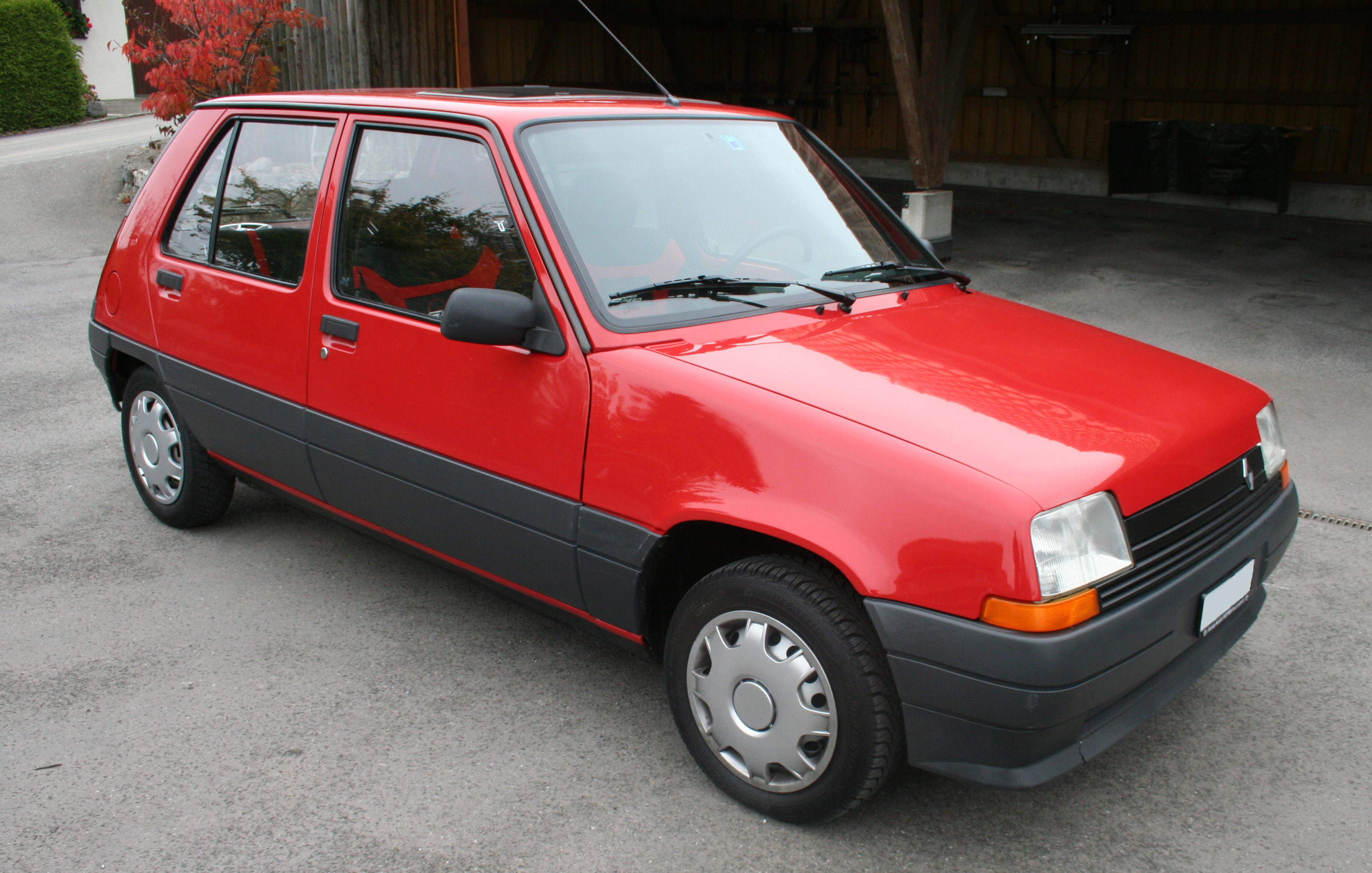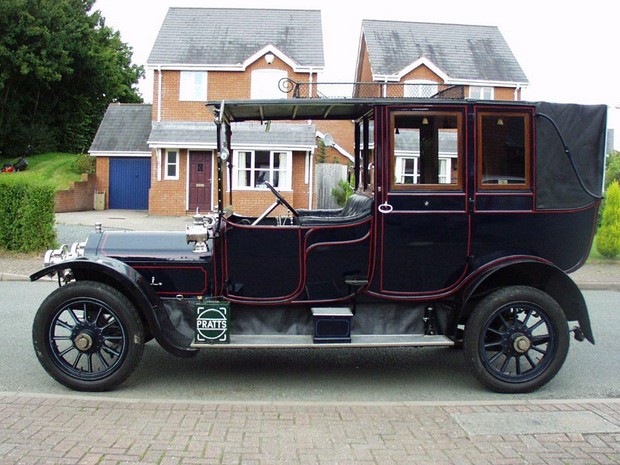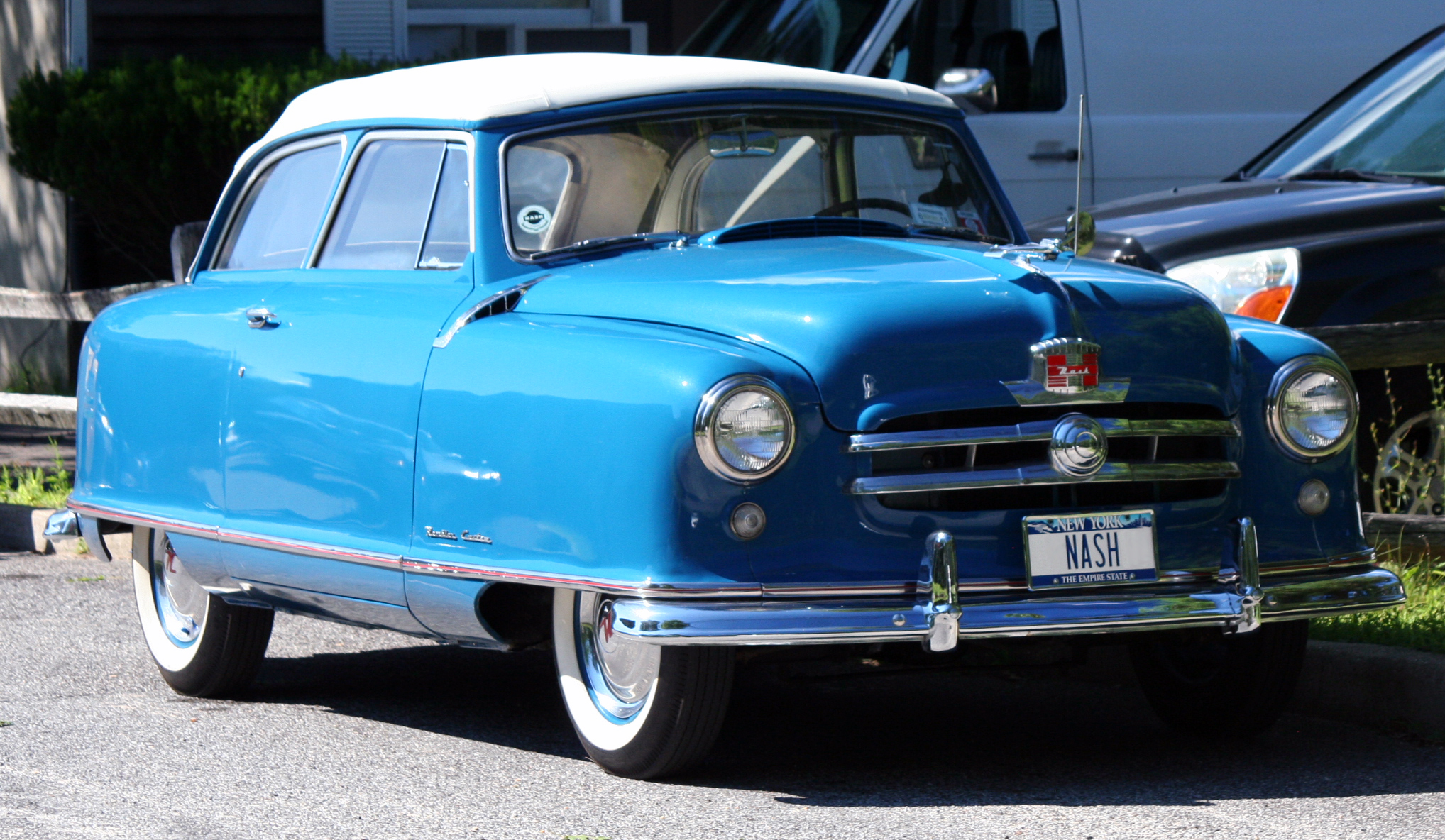|
Renault Monasix
The Renault Monasix (Type RY) was a compact car or small family car manufactured between 1927 and 1932 by Renault. Overview The car was considered a commercial failure mainly because the engine was too small for the car's length and weight, which often led to problems in keeping the car under control. Renault ended production of the car in 1932. With its 1,476 cc displacement the engine, of an 8CV tax horsepower rating, was one of the smallest six cylinder engines available at the time. Starting in 1928, the "''Compagnie Générale des voitures à Paris''", the main Paris taxi company, purchased a large number of the cars and painted them in the same shade of green as that used for the city's buses: 5,000 taxi versions were made, the last of which were used in Paris until 1962. In competition, the Monasix was raced in the Morocco Rally in 1928. The Monastella version was an upgraded version of Monasix with better trim. Production ended in 1932 and the car was replaced ... [...More Info...] [...Related Items...] OR: [Wikipedia] [Google] [Baidu] |
Renault Monastella
The Renault Monastella (Type RY1) was a compact car, compact luxury car manufactured between late 1928 and 1933 by Renault. It shared the mechanical elements and bodywork options of the Renault Monasix but was differentiated by superior levels of finish and equipment. Details and Evolutions The Monastella was a more luxurious version of the Renault Monasix, Monasix which had itself first appeared at the 1927 Paris Paris Motor Show, Motor Show. The 8CV Monastella was released for 1929 at the October 1928 motor show with a small 6-cylinder engine of 1476 cc. Apart from the superior equipment levels, it was differentiated from the Renault Monasix, Monasix by a plate that said "carrosserie STELLA": at a time when names for cars rarely went beyond defining their engine size and type, this badge stressed the manufacturer's determination to differentiate the two models. Initially the radiator was positioned behind the engine, reflecting the normal layout for Renault engine compart ... [...More Info...] [...Related Items...] OR: [Wikipedia] [Google] [Baidu] |
Sedan (car)
A sedan or saloon (British English) is a passenger car in a three-box configuration with separate compartments for an engine, passengers, and cargo. The first recorded use of the word "sedan" in reference to an automobile body occurred in 1912. The name derives from the 17th-century litter known as a sedan chair, a one-person enclosed box with windows and carried by porters. Variations of the sedan style include the close-coupled sedan, club sedan, convertible sedan, fastback sedan, hardtop sedan, notchback sedan, and sedanet/sedanette. Definition A sedan () is a car with a closed body (i.e. a fixed metal roof) with the engine, passengers, and cargo in separate compartments. This broad definition does not differentiate sedans from various other car body styles, but in practice, the typical characteristics of sedans are: * a B-pillar (between the front and rear windows) that supports the roof * two rows of seats * a three-box design with the engine at the front and the c ... [...More Info...] [...Related Items...] OR: [Wikipedia] [Google] [Baidu] |
Renault Vehicles
This is a list of vehicles badged as Renault. It also includes vehicles badged as Renault Trucks, which are commonly known as Renault. Current models Historic models Pre–World War I To World War I (1899–1918) *Voiturette (Type A/Type B/Type C/Type D/Type E/Type G/Type H/Type J) (1899–1903) * 8CV (Type L/Type M/Type Z/Type AJ/Type AL/Type AN/ Type AX) (1902–1914) ** 7CV (Type R/Type T) (1903–1904) ** 14CV (Type N (a)/Type N (b)/Type U (b)/Type U (c)/Type U (d)/Type X/Type AB/Type BX/Type CC/Type DJ) (1903–1914) *** 10CV (Type N (c)/Type Q/Type U (a)/Type U (e)/ Type Y/Type AH/Type AM/Type BK/ Type GS/Type IC/Type IG/Type II/Type IM/Type JR) (1903–1923) (Was facelifted as the Renault KZ in 1923) *** 20CV (Type S/Type V/Type AS/Type BY/Type BM/Type CE/Type CH/Type DX/Type EI/Type EJ) (1903–1919) **** 18CV (Type BF/Type CD/Type ED/Type FE/Type FS/Type GR/Type GV/Type HG/Type IQ/Type JS/Type JY/Type KD/Type MG/Type PI/Type PZ) (1909–1928) ***** 22CV (Type DO/Ty ... [...More Info...] [...Related Items...] OR: [Wikipedia] [Google] [Baidu] |
Morocco
Morocco (),, ) officially the Kingdom of Morocco, is the westernmost country in the Maghreb region of North Africa. It overlooks the Mediterranean Sea to the north and the Atlantic Ocean to the west, and has land borders with Algeria to the east, and the disputed territory of Western Sahara to the south. Mauritania lies to the south of Western Sahara. Morocco also claims the Spanish exclaves of Ceuta, Melilla and Peñón de Vélez de la Gomera, and several small Spanish-controlled islands off its coast. It spans an area of or , with a population of roughly 37 million. Its official and predominant religion is Islam, and the official languages are Arabic and Berber; the Moroccan dialect of Arabic and French are also widely spoken. Moroccan identity and culture is a mix of Arab, Berber, and European cultures. Its capital is Rabat, while its largest city is Casablanca. In a region inhabited since the Paleolithic Era over 300,000 years ago, the first Moroccan st ... [...More Info...] [...Related Items...] OR: [Wikipedia] [Google] [Baidu] |
Tax Horsepower
The tax horsepower or taxable horsepower was an early system by which taxation rates for automobiles were reckoned in some European countries such as Britain, Belgium, Germany, France and Italy; some US states like Illinois charged license plate purchase and renewal fees for passenger automobiles based on taxable horsepower. The tax horsepower rating was computed not from actual engine power but by a mathematical formula based on cylinder dimensions. At the beginning of the twentieth century, tax power was reasonably close to real power; as the internal combustion engine developed, real power became larger than nominal taxable power by a factor of ten or more. Britain The so-called RAC horsepower rating was devised in 1910 by the RAC at the invitation of the British government. The formula is: : \frac where: : D is the diameter (or bore) of the cylinder in inches, : n is the number of cylinders The formula was calculated from total piston surface area (i.e., "bore" only). The ... [...More Info...] [...Related Items...] OR: [Wikipedia] [Google] [Baidu] |
Renault Monasix (1931 (16005350582)
The Renault Monasix (Type RY) was a compact car or small family car manufactured between 1927 and 1932 by Renault. Overview The car was considered a commercial failure mainly because the engine was too small for the car's length and weight, which often led to problems in keeping the car under control. Renault ended production of the car in 1932. With its 1,476 cc displacement the engine, of an 8CV tax horsepower rating, was one of the smallest six cylinder engines available at the time. Starting in 1928, the "''Compagnie Générale des voitures à Paris''", the main Paris taxi company, purchased a large number of the cars and painted them in the same shade of green as that used for the city's buses: 5,000 taxi versions were made, the last of which were used in Paris until 1962. In competition, the Monasix was raced in the Morocco Rally in 1928. The Monastella version was an upgraded version of Monasix with better trim. Production ended in 1932 and the car was replaced ... [...More Info...] [...Related Items...] OR: [Wikipedia] [Google] [Baidu] |
Compact Car
Compact car is a vehicle size class — predominantly used in North America — that sits between subcompact cars and mid-size cars. "Small family car" is a British term and a part of the C-segment in the European car classification. However, prior to the downsizing of the United States car industry in the 1970s and 1980s, larger vehicles with wheelbases up to were considered "compact cars" in the United States. In Japan, small size passenger vehicle is a registration category that sits between kei cars and regular cars, based on overall size and engine displacement limits. United States Current definition The United States Environmental Protection Agency (EPA) ''Fuel Economy Regulations for 1977 and Later Model Year'' (dated July 1996) includes definitions for classes of automobiles. Based on the combined passenger and cargo volume, compact cars are defined as having an ''interior volume index'' of . 1930s to 1950s The beginnings of U.S. production of compact car ... [...More Info...] [...Related Items...] OR: [Wikipedia] [Google] [Baidu] |
Louis Renault (industrialist)
Louis Renault (; 12 February 1877 – 24 October 1944) was a French industrialist, one of the founders of Renault, and a pioneer of the automobile industry. Renault built one of France's largest automobile manufacturing concerns, which still bears his name. During World War I his factories contributed massively to the war effort, notably so by the creation and manufacture of the first tank of modern configuration, the Renault FT tank. Accused of collaborating with the Germans during World War II, he died while awaiting trial in liberated France toward the end of 1944 under uncertain circumstances. His company was seized and nationalized by the provisional government of France although he died before he could be tried. His factories were the only ones permanently expropriated by the French government. In 1956, ''Time'' magazine described Renault as "rich, powerful and famous, cantankerous, brilliant, often brutal, the little Napoleon of an automaking empire — vulgar, loud, ... [...More Info...] [...Related Items...] OR: [Wikipedia] [Google] [Baidu] |
Manual Transmission
A manual transmission (MT), also known as manual gearbox, standard transmission (in Canada, the United Kingdom, and the United States), or stick shift (in the United States), is a multi-speed motor vehicle transmission system, where gear changes require the driver to manually select the gears by operating a gear stick and clutch (which is usually a foot pedal for cars or a hand lever for motorcycles). Early automobiles used ''sliding-mesh'' manual transmissions with up to three forward gear ratios. Since the 1950s, ''constant-mesh'' manual transmissions have become increasingly commonplace and the number of forward ratios has increased to 5-speed and 6-speed manual transmissions for current vehicles. The alternative to a manual transmission is an automatic transmission; common types of automatic transmissions are the hydraulic automatic transmission (AT), and the continuously variable transmission (CVT), whereas the automated manual transmission (AMT) and dual-clutch tran ... [...More Info...] [...Related Items...] OR: [Wikipedia] [Google] [Baidu] |
Straight-six Engine
The straight-six engine (also referred to as an inline-six engine; abbreviated I6 or L6) is a piston engine with six cylinders arranged in a straight line along the crankshaft. A straight-six engine has perfect primary and secondary engine balance, resulting in fewer vibrations than other designs of six or less cylinders. Until the mid-20th century, the straight-six layout was the most common design for engines with six cylinders. However, V6 engines became more common from the 1960s and by the 2000s most straight-six engines had been replaced by V6 engines. An exception to this trend is BMW which has produced automotive straight-six engines from 1933 to the present day. Characteristics In terms of packaging, straight-six engines are almost always narrower than a V6 engine or V8 engine, but longer than straight-four engines, V6s, and most V8s. Straight-six engines are typically produced in displacements ranging from , however engines ranging in size from the Benelli ... [...More Info...] [...Related Items...] OR: [Wikipedia] [Google] [Baidu] |
Flathead Engine
A flathead engine, also known as a sidevalve engine''American Rodder'', 6/94, pp.45 & 93. or valve-in-block engine is an internal combustion engine with its poppet valves contained within the engine block, instead of in the cylinder head, as in an overhead valve engine. Flatheads were widely used internationally by automobile manufacturers from the late 1890s until the mid-1950s but were replaced by more efficient overhead valve and overhead camshaft engines. They are currently experiencing a revival in low-revving aero-engines such as the D-Motor. The side-valve design The valve gear comprises a camshaft sited low in the cylinder block which operates the poppet valves via tappets and short pushrods (or sometimes with no pushrods at all). The flathead system obviates the need for further valvetrain components such as lengthy pushrods, rocker arms, overhead valves or overhead camshafts. The sidevalves are typically adjacent, sited on one side of the cylinder(s), though ... [...More Info...] [...Related Items...] OR: [Wikipedia] [Google] [Baidu] |
Torpedo (car)
The torpedo body style was a type of automobile body used from 1908 until the mid-1930s, which had a streamlined profile and a folding or detachable soft top. The design consists of a hood or bonnet line raised to be level with the car's waistline, resulting in a straight beltline from front to back. The name was introduced in 1908 when Captain Theo Masui, the London-based importer of French Gregoire cars, designed a streamlined body and called it "The Torpedo". The Torpedo body style was usually fitted to four- or five-seat touring cars (cars without a fixed roof) with detachable or folding roof, and low side panels and doors. Torpedo cars did not have B pillars, so the only uprights present were those supporting the windshield The windshield (North American English) or windscreen (Commonwealth English) of an aircraft, car, bus, motorbike, truck, train, boat or streetcar is the front window, which provides visibility while protecting occupants from the elements. ... [...More Info...] [...Related Items...] OR: [Wikipedia] [Google] [Baidu] |
.jpg)







.jpg)
